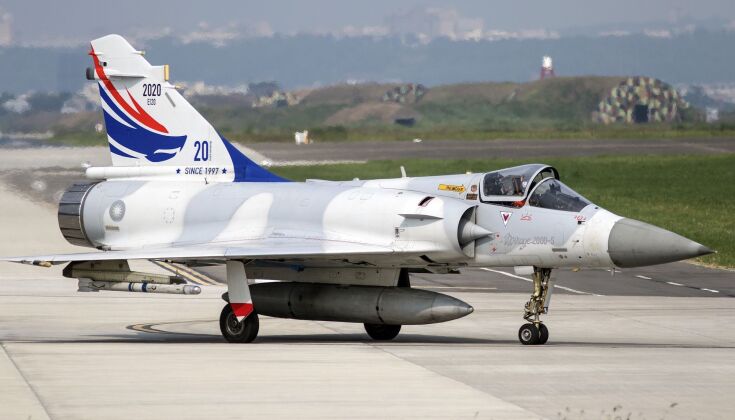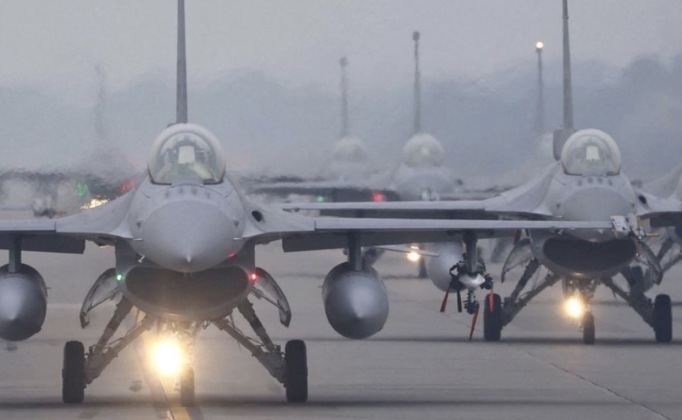News
Taiwan Considering Costly Life Extension For Problematic French Mirage 2000 Fighters

The Republic of China Air Force, the official name of the air arm of Taiwan’s armed forces, is investing $4.7 million in a structural safety extension assessment for its Mirage 2000 fighters based in Hsinchu. The assessment will affect only the nine twin seat aircraft in service, although the Air Force has also requested an evaluation of radar, electric warfare system, launch architecture and performance enhancement plans for its 40 single seaters. The Mirage 2000s are the most costly fighters fielded by Taiwan, with 60 having been ordered from France in the 1990s alongside 140 F-16A/B fighters from the United States to phase out obsolete F-104 jets and bring the fleet to a fourth generation level. The orders were placed in response to mainland China’s acquisition of Su-27 fighters from the Soviet Union, which were widely considered the most capable fielded by any air force in the world at the time. Although the Mirage 2000 and F-16 were much lighter aircraft that could not operate on the same level as the Su-27, they were acquired in far greater numbers which ensured the balance of power in the air still remained relatively favourable for Taiwan. At the time Taipei and Beijing were officially in a state of civil war, with both claiming to be the sole legitimate seats of government of the Chinese nation which remains the case today. Taipei’s claim has negligible international recognition, however, which has left it with the status of an effective non state actor – making it difficult to procure armaments from abroad.
The Mirage 2000 quickly came to be widely considered a poor choice to modernise the Taiwanese fleet, as not only was its flight performance far poorer than that of the F-16, but France failed to provide options to meaningfully enhance the aircraft in contrast to the U.S. which sold Taiwan new generations of missiles and later a comprehensive upgrade package the F-16V. The first F-16s were upgraded to this standard in 2016, and the first full unit of 64 fighters was commissioned on November 18th 2021. Taiwan’s indigenous F-CK fourth generation fighters have also proven far more reliable. More serious still has been the Mirage 2000’s crash rate with twelve percent of the fleet lost to accidents. Complaints have frequently been raised regarding their poor manufacturing quality in France resulting in cracks forming in the airframes, while the Mirages’ relatively high operational costs have made keeping the obsolete aircraft in service a controversial issue. Former deputy commander of the air force Zhang Yanting, for one, recently highlighted that a tight national defence budget and the Mirage’s low efficiency and combat effectiveness were strong arguments against further investment in the fleet. Taiwanese fighters have suffered from a significant number of crashes in recent years, with four fighters lost in under six months from November 2020 to March 2021.

Taiwan is expected to replace its Mirage 2000s with F-16 Block 70/72 ‘4+ generation’ fighters, with 66 having been ordered under an $8.2 billion deal in 2019 although deliveries have continued to be delayed due to production issues in the United States. The F-16s’ expected delivery date, and the costs and dangers of continuing to operate the Mirage 2000s, are likely to be primary factors influencing the decision on whether to keep them in service. Taipei initially sought to acquire F-35 fifth generation fighters from the United States but has been consistently denied permission to make such a purchase, largely due to the high chances that the fighter’s technologies would be leaked to the Chinese mainland. High pro-Beijing sympathies prevalent in Taiwan make this a significant risk for any sale of sensitive American equipment. Taiwanese pilots have notably on multiple occasions defected to the Chinese mainland flying Western-supplied aircraft in the past. Without the F-35 Taiwan faces a very steep qualitative disadvantage in the air as the Chinese mainland moves to field J-20 fifth generation heavyweight fighters in much greater numbers and with increasingly cutting edge capabilities.












